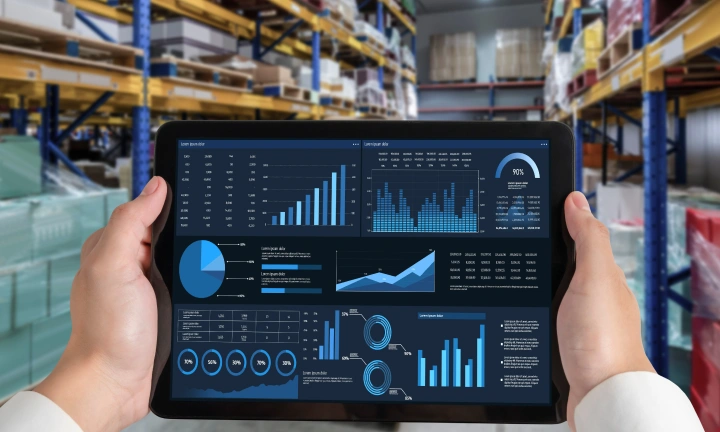The dawn of big data has taken the majority of businesses by storm! This has further led to business tycoons finding it difficult to decipher their customer’s expectations.
The digital transformation, moreover, has taken a huge toll on nearly every industry, coercing them to embrace essential business tactics.
Amidst several other industries, the CPG companies have been at the foreground of Big Data technology. The unexpected developments in their landscape have also necessitated the urge to prioritize business operations and change the course of action.
For every CPG firm to stay ahead of the curve, they must leverage the changing consumer products industry trends in 2020 better than their competitors.
Merge The Data with CPG – The Why of Big Data
Data analytics has been on a constant rise!
A huge amount of data is produced daily and used to extract vital CPG data insights underlining the customers’ behavior and preferences. Unquestionably, this aspect of data has set forth the conventional type of business, paving way for novel avenues.
Though known as the most successful and number-one industry across the globe, even the CPG sector is facing success gaps – all credits to the emergence of a customer-driven economy.
Presently, we’re living in a customer-centric eon.
The majority of the consumers are more active and engrossed at a higher level. This has changed their usage trend exponentially, thereby intimidating the existence of conventional businesses. The uncertain demand, changing needs, and unforeseen changes in customers’ tastes, has also made it difficult to predict their buying patterns.
This is where Big Data comes into play. With a massive potential to scrutinize the customer’s behavior and highlight the next possible purchase, Big Data can surely turn the tide!
It’s also high time for the consumer packaged goods industry to re-evaluate their cpg marketing strategy, only to take complete advantage of Big Data.
Make Use of Big Data – How Can It Help The Industry?
Consumer packaged goods industry produces huge chunks of information on a daily basis. This includes:
- What number of goods are sold?
- What are the different types of products manufactured?
- What must be a product’s minimum price?
- What should be the maximum value paid by the customer?
And this list just goes on…
With a massive amount of data being gathered, marketing teams can constantly produce never-ending growth opportunities. This can further help firms to enrich their consumer experience.
All of this is merely the tip of an iceberg! You’ll surely be amazed when you’ll see the real image that lies underneath.
Bringing the benefits offered by Big Data under the limelight, let’s glance through the positive impact it has on the industry:
- Enhances the Return On Investment (ROI), as you can customize products based on the customer’s expectations.
- Speeds up the time required to advertise your services, as you can make faster and informed decisions.
- Boosts the customer’s shopping experience, as it lets you stockpile the inventory with the help of automated inventory audits.
Data exploitation has now become a part of every industry’s arsenal and the majority of companies are using it. Given the countless opportunities for success and growth, it’s time for the CPG sector to harness the advantage of Big Data.
Business Strategies to Adopt – The How of Big Data
Big Data has the potential to alter the entire landscape of the digital economy – certainly for the good!
You are, however, not the only one in the competition. For you to stay ahead of the curve, it’s crucial to embark on a tactical and organized approach.
Aren’t sure how to go about it? Simply adopt the following strategies.
Offer customized outcomes
As we’ve already mentioned, we’re living in a customer-driven era. To remain in the foreground and shine in the industry, try to understand the basic expectations and needs of the customers.
Gone are those days, when running a business was merely considered as selling products. These days, offering outstanding customer experience is what business is all about!
Customers no longer look for products they need. They rather focus on the experience and quality offered by you.
Selling has become an art and you must personalize it with regards to the preference of your consumer. For that, interact and get to know your customers on a personal level.
Understand their expectations and accordingly develop strategies. One-on-one interaction and customized campaigns can offer better results.
Develop an omnichannel presence
People are active on various digital platforms. So having just one channel in place will only lower your sales and the bottom line.
Your physical store might be producing some amount of traffic, but that’s not enough. You must embrace different platforms and let customers interact with your brand. This will increase the purchase percentage both on and off your store.
Users, these days, prefer receiving products at their doorstep and hardly buy fast-moving consumer goods or other products from a shop. You must, therefore, increase your online presence and offer a delivery option to the customers.
SAP research has also revealed that sales increased by around 34% in 2017 when users were offered direct delivery.
Though the CPG industry has a long way to go, it’s essential to implement this model. This will surely retain the present customers and attract new ones.
Work in unison
Yes, industries are working hard to offer excellent services. But they’re also developing partnerships for increased growth opportunities.
To successfully run the business functions, the CPG sector must collaborate with other divisions to accelerate the process. This will also add reliability and flexibility in the business plan.
They must also create transparency and develop trust amid various departments. This will state that all the products are responsibly manufactured and are of top quality.
Conclusion
Guesswork is no longer a preferred option to foresee customers’ expectations and behavior. They’ve, in fact, become a thing of the past! Today, companies need a 360-degree view of their operations and customer expectations. With Big Data doing all of it in an accurate and organized manner, it’s definitely the most powerful source to help make informed decisions.

